|
|
 |
 |
 |
 |
 |
 |
|
|
President Richard Nixon's Role in the Vietnam War |
 |
 |
 |
 |
|
|
|
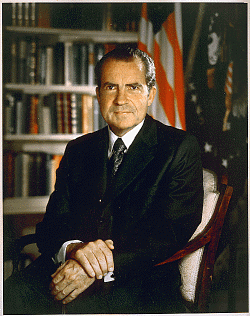
Vietnam Chronology | Vietnam Bibliography HISTORY OF U.S. INVOLVEMENT IN VIETNAM
On January 20, 1969, when Richard Nixon became the fifth U.S. President in twenty years to confront the question of American involvement in Vietnam, there were 540,000 American troops in Vietnam sent by Presidents Kennedy and Johnson, more than 325 men being held prisoners of war, and America was sharply divided over our purpose and our presence in Vietnam.
Over the course of his first term, President Nixon charted a course which did not yield to the demands of a vocal, disruptive, and sometimes violent majority. With the support of the majority of the American people, he sought to conclude America's role in Vietnam without concluding America's role in the world.
His leadership resulted in the signing of a peace agreement on January 27, 1973, which earned with it the hope that the people of South Vietnam might enjoy freedom and peace in the years to come.
Harry Truman was the first American President to commit the United States to aiding Vietnam by sending military advisors there in 1950, while Vietnam was still under French colonial control. This reflected an American commitment to preventing Communist domination of Vietnam.
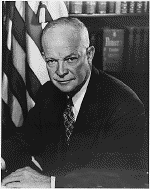
President Eisenhower continued that commitment. But in 1954, with the French withdrawal from Vietnam, the formula changed. Vietnam was partitioned, with the North falling under the control of the Communists and the South under the control of Vietnamese nationalists and anti-Communists. By 1960, there were a total of 685 non-combat U.S. advisors in South Vietnam.

President Kennedy was the third President to affirm our basic policy in Vietnam, but the first to expand it to a new, heightened level of commitment. He increased the number of U.S. military combat advisors in South Vietnam to 16,000. The Kennedy administration also committed a tragic blunder that forever changed the equation in Vietnam. On November 1, 1963, a coup encouraged and supported by the Kennedy administration led to the assassination of South Vietnamese President Ngo Dinh Diem. By participating in the removal of South Vietnam's President, Kennedy had made the United States directly responsible for the fate of South Vietnam. What had been Vietnam's war became America's war.
President Johnson escalated the American role to the level at which President Nixon found it. Following overwhelming Congressional approval of the Gulf of Tonkin Resolution , which ratified his actions, Johnson began sustained bombing of North Vietnam, raised U.S. troop levels to 200,000 by the end of 1965, and 540,000 by the end of 1968. LESSONS FROM THE FRENCH FAILURE
Richard Nixon's first visit to Vietnam occurred in 1953, as part of his extensive Asian tour undertaken on behalf of President Eisenhower. The French colonial presence would soon end in defeat at Dien Bien Phu. Vice President Nixon came away convinced that the French failure to adequately train and inspire the Indochinese to defend themselves against Communist aggression would be their undoing.

From 1961 through 1968, Richard Nixon visited South Vietnam four times. Never criticizing U.S. policy while abroad, he nevertheless raised serious reservations about it at home. He became convinced that the U.S. was in danger of repeating the mistake made by the French - insufficient training of the South Vietnamese troops in defense of their country against Communist aggression. He also believed that the United States could not prevail by pursuing a course of gradualism. The U.S. policy of offering bombing halts in exchange for progress in negotiations only succeeded in convincing the North Vietnamese that American resolve was wavering. VIETNAM AND THE 1968 CAMPAIGN
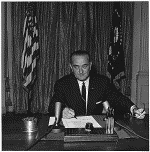
In the 1968 campaign, candidate Nixon asserted in virtually every speech that the goal of his administration would be to "end the war and win the peace in Vietnam." One of the enduring myths of the 1968 presidential campaign is that the Republican nominee claimed to have a "secret plan" to end the war. He never made such a claim.
Just days before the election, President Johnson announced a bombing halt which many believed was designed to give his Vice President, and Nixon's opponent, Hubert Humphrey, a last-minute boost at the polls.
If that was the intent, it nearly succeeded. Nixon's substantial lead just prior to the
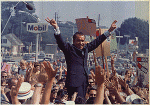
bombing halt two weeks before the election turned into a squeaker on election night.
President-elect Nixon was committed to ending the war in such a way that would guarantee freedom and security for South Vietnam, while maintaining America's standing as a reliable ally on the world stage. He would enter office, however, hampered by LBJ's bombing halt and by the negotiations in Paris, which were notable only for the propaganda points they earned for the North Vietnamese. RESISTING THE LEFT AND THE RIGHT
Achieving President Nixon's quest for peace in Vietnam required a dual approach: he had to begin the process of ending the war while uniting the nation behind his policy for achieving that goal. The war could not be won on the battlefield if it was being lost in
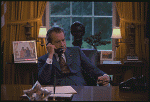
the living rooms and the streets of America.
The President had to move boldly to take control, to bring the American people firmly behind him if he was to have any hope of ending the war while winning the peace. He had to resist those on the left who wanted an immediate withdrawal, as well as those on the right who wanted an immediate escalation of the war. CAMBODIA: A MILITARY SUCCESS
Throughout 1969 and into 1970, the North Vietnamese army was making increasing use of sanctuaries in Cambodia, both to supply troops in the field and for use as staging areas for offensives into South Vietnam. Communist violations of Cambodia's sovereignty had begun as early as 1965.
In March 1969, President Nixon ordered unannounced bombing runs into Cambodia to weaken the enemy's supply routes and storage areas. Shortly after the first

such attack took place, the North Vietnamese acted on the President's proposal to initiate a secret negotiating channel. While this action met with substantial success, it became clear that a more intensive operation would be needed to counteract North Vietnam's massive abuse of Cambodian neutrality to support its war machine.
On May 14, 1969, President Nixon made his first major address about Vietnam over nationwide TV and radio. His peace proposal went beyond anything previously offered by the United States.
Two months later, in Guam, the President outlined what would become known as the Nixon Doctrine . He laid out his vision for the U.S. role in Asia after Vietnam. The Nixon Doctrine declared that the United States would honor its commitments in Asia by furnishing arms and aid - but not troops - against direct or indirect Communist aggression.
On April 30, 1970, President Nixon announced to the nation the beginning of an operation to clean out enemy sanctuaries in Cambodia so they could not be used to prolong the war through further aggression in South Vietnam. The President assured the American people that this was not an invasion of Cambodia. Only areas occupied and controlled by the North Vietnamese would be attacked by the joint American-South Vietnamese force.
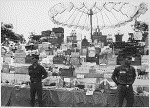
By the time the action concluded on June 30, 1970, the date Nixon promised to conclude the attack, huge supplies of arms, equipment, ammunition, and food had been captured, including a year's supply of ammunition, nearly 23,000 rifles and machine guns, more than 2,500 heavy mortars and rocket launchers, and over 14 million pounds of rice. In all, almost as much was captured in Cambodia in the first month of the operation than had been captured in all of Vietnam in 1969. The Communists had to scrap their plans for a spring offensive. KENT STATE
The President's Cambodia announcement was met with a firestorm of protest from his critics. They accused him of widening the war and sabotaging any prospect for peace. Demonstrations erupted on college campuses across the nation.
At Kent State University in Ohio, the Governor had to call in the National Guard after some demonstrators burned the Army ROTC building to the ground. The guardsmen, many the same age as the students, were pelted with rocks and chunks of concrete. Tragically, in the ensuing panic, shots rang out. Four students lay dead. The President later referred to the days following Kent State as among the darkest of his Presidency. MY LAI
In December 1969, information about United States troops killing 175 civilians in My Lai during the Tet offensive in 1968 came to light. Army First Lieutenant William Calley, Jr. was court-martialed for his role in the murder or twenty-two South Vietnamese civilians. Despite considerable pressure from those who wanted clemency granted to Calley, President Nixon reviewed the case and decided not to intervene.
Anti-war critics tried to turn this isolated incident into a broad indictment of our presence in Vietnam. But they were applying an unfortunate double standard. North Vietnamese atrocities, such as the slaughter of South Vietnamese civilians in Cai Be and Dak Son in 1967 and the massive live burial of innocents in Hue in 1968 were virtually ignored in the United States.
The United States Army punished its soldiers for wartime atrocities. The North Vietnamese gave medals to those who buried thousands alive at Hue. BRINGING US TOGETHER
Late in the 1968 campaign, a sign appeared at a Nixon rally: "Bring Us Together." America was bitterly divided about Vietnam, and the President realized that he had to bring the American people together behind his policy.
On November 3, 1969, in the most effective speech of his Presidency, President Nixon appealed to those Americans who supported the cause to which the United States was dedicated in Vietnam, the "Silent Majority."
The response to this speech was extraordinary. More than 50,000 telegrams and 30,000 letters flooded the White House. The President's approval rating jumped eleven points, the biggest increase as a result of a Presidential speech in the history of the Gallup Poll. This speech remains the milestone against which all other Presidential addresses are judged.
The support of the silent majority stood in stark contrast to that of a violent minority, who sought to make policy in the streets. President Nixon recognized that there were those who had honest disagreements about his policy in Vietnam. However, all too often, there were those behind the scenes whose aim was not vigorous dissent but violent destruction. In the name of free speech they used force and intimidation to stifle
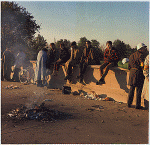
debate; they used bombs to proclaim their message that there should be no bombing; they took lives while professing that they were trying to preserve lives; they chanted "peace" while turning our cities and our campuses into war zones.
From January 1969 through April 1970, there were more than 40,000 bombings, attempted bombings, and bomb threats. More than $21 million in property was damaged, and 43 people were killed. This was not just sporadic violence. Rather, as the FBI reported, it appeared to be part of a nationwide terrorist offensive by radical student groups whose aim was to undermine the very foundations of American society.
Julie Nixon Eisenhower was unable to attend her own graduation from Smith College due to threats of violent disruption. In both 1969 and 1973 the Nixons had to ride in closed cars in their Inaugural parades because of the violent minority.
Terrorist violence did not achieve its goal. The President ended his first year in office with the majority of the American people behind him. While the anti-war violence did not cease, President Nixon had clearly turned the tide. Nixon never lost the support of the silent majority as he pursued the war in Vietnam to its successful conclusion. VIETNAMIZATION

President Nixon knew that one of the reasons the French failed in Vietnam was their pursuit of a strategy which failed to make the Vietnamese people a part of their own struggle against Communist domination. In a very real sense, colonial paternalism led to France's loss in Vietnam.
Early in 1969, the President announced his policy of "Vietnamization." This policy, mocked by many on the left who believed the South Vietnamese were unwilling or unable to fight Communist aggression, called for the training and equipping of a South Vietnamese army which could stand up to the Soviet-trained and supplied North Vietnamese forces.
The President tied American troop withdrawals to the success of Vietnamization. During his first term, President Nixon brought home more than 90% of our troops. The ability of the South Vietnamese troops was proven in combat. To the surprise of critics, the South Vietnamese fought bravely and well. After the United States withdrew, even though the U.S. Congress had drastically cut all aid to South Vietnam, the South Vietnamese troops were able to fend off bravely the Soviet-backed North for nearly two years. NEGOTIATION
Early in January 1969, the United States and South Vietnam were engaged in negotiations with the aggressors from the North, but these negotiations were stalemated. President Nixon faced with the challenge of beginning productive negotiations with the North.

The President authorized National Security advisor Henry Kissinger to open a channel through which meaningful talks could take place. The major benefit of Kissinger's "off-the-record" talks was it robbed the North of the chance to score propaganda points in the American media. It was this channel which eventually brought about the peace agreement which ended the war.
President Nixon recognized that negotiations - whether public or private - would not succeed if the North doubted the American will to see the war through to an honorable conclusion. The Communists doubted the President's resolve on more than one occasion. In the spring of 1972, they launched a major military action, which coincided with a sudden lack of progress in the secret talks. The Communists were gambling that the President would not want to risk undermining his upcoming summit with Soviet leader Brezhnev. They were wrong.
President Nixon responded to the North Vietnamese action by bombing military targets in Hanoi, the capital of Vietnam, and in Haiphong, a major port city.
Anti-war critics were quick to denounce the President's actions. They screamed that he was widening the war, and not ending it, but the President was firm. The Communists got the message, and soon sought to renew a real dialogue with the United States in Paris.
As 1972 came to a close, the North Vietnamese again challenged the U.S. will to "end the war and win the peace." Just days away from achieving an agreement, the North tried to torpedo the culmination of the peace process.
President Nixon again took forceful action. In December 1972, he ordered action similar to that taken in May. Predictably, the left vehemently protested: an ardent liberal member of Congress even questioned the President's sanity.
The President's approach nevertheless paid off. The North returned to the table, and the peace agreement was signed within a month, on January 27, 1973.
As one POW said of the December bombing:

"When we heard the heavy bombs impacting in Hanoi, we started to go and pack our bags because we knew we were going home, and we were going home with honor." THE POWS
When President Nixon entered office, 328 American soldiers were being held as prisoners of war by North Vietnam. The Communists were cynically using the prisoners as pawns in their political chess game. Sadly, there were some in the United States who supported Hanoi in this craven manipulation. All efforts by the United States to gain their release were cruelly rebuffed by the North.

North Vietnam kept the POWs in shockingly inhumane conditions which violated all standards of human decency. They even denied the POWs the right to write and receive simple letters from their loved ones. The United Nations and the International Red Cross were among the organizations calling on the North to comply with the Geneva Convention, which Hanoi had signed and which spelled out the accepted norms of treatment of prisoners of war.
President Nixon made many offers to exchange prisoners with the North. One proposal called for the release of 8,000 North Vietnamese prisoners for 800 free world prisoners. The Communists rejected every proposal the President made.
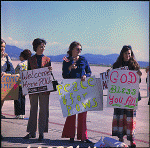
The President felt a special obligation to the brave and resolute families of the men who were being held or were missing in action in Vietnam. He maintained an ongoing dialogue with the families, especially through the National League of Families of American Prisoners and Missing in Southeast Asia. As he said to them in 1972, "you have never been away from my thoughts and you have never been away from my prayers, and there is nothing I want more than to bring your loved ones home, and I will never let you down." The peace agreement signed on January 27, 1973, brought the American POWs back. Within days, the first of 562 POWs were returning home. Some had been in captivity for more than eight years.
President Nixon had placed a high priority on insuring that any peace agreement must provide for the return of our prisoners of war. His steadfast insistence, supported by the families of the POWs, enabled the POWs to come home proudly, on their feet, with their heads held high. A DINNER AT THE WHITE HOUSE
On May 24, 1973, the President and Mrs. Nixon hosted the largest sit-down dinner ever served at the White House for the returned prisoners and their families - over 1300 people.
It was a magnificent event, held under a massive tent on the South Lawn. There were many emotional moments, for the men, their families, and the President and his family. An American flag fashioned from scraps of cloth and string by Air Force Lieutenant Colonel John Dramesi while in prison was presented with the colors. The men gave the President himself a plaque which read: "Our leader - our comrade, Richard the Lionhearted."
Actor John Wayne, a favorite of the assembled guests, turned to the President as he left the stage and said: "I want to thank you, Mr. President, not for any one thing, just for everything." Irving Berlin , composer of "God Bless America" led the assembled crowd in the singing of that patriotic hymn. VIETNAM: EPILOGUE
In the time since the fall of South Vietnam, more people have died under a Communist peace than were lost in the entire twenty-five year course of war. The tragic evidence of the boat people of Vietnam and the killing field of Cambodia, where two million people were killed, speaks of the horrors of Communist tyranny and vindicates the nobility of our cause in Vietnam.
The United States was in Vietnam to prevent the terrible tragedy which followed the collapse of the framework for peace that President Nixon had so carefully constructed.
President Nixon dedicated himself to ending the war in Vietnam in such a way that brought honor to those who had given their lives for freedom's sake, and gave hope to those whose struggle for freedom was not yet complete.
The responsibility for the ultimate failure of this policy lies not with the men who fought, but with those in Congress who broke faith with the brave soldiers, American and South Vietnamese, who sacrificed so much for peace and freedom in Vietnam.
In his book, No More Vietnams, which he dedicated "To those who served," former President Nixon wrote: "No more Vietnams can mean that we will not try again. It should mean that we will not fail again."

|
|
|
|
|
|
 Vietnam War History
Vietnam War History
